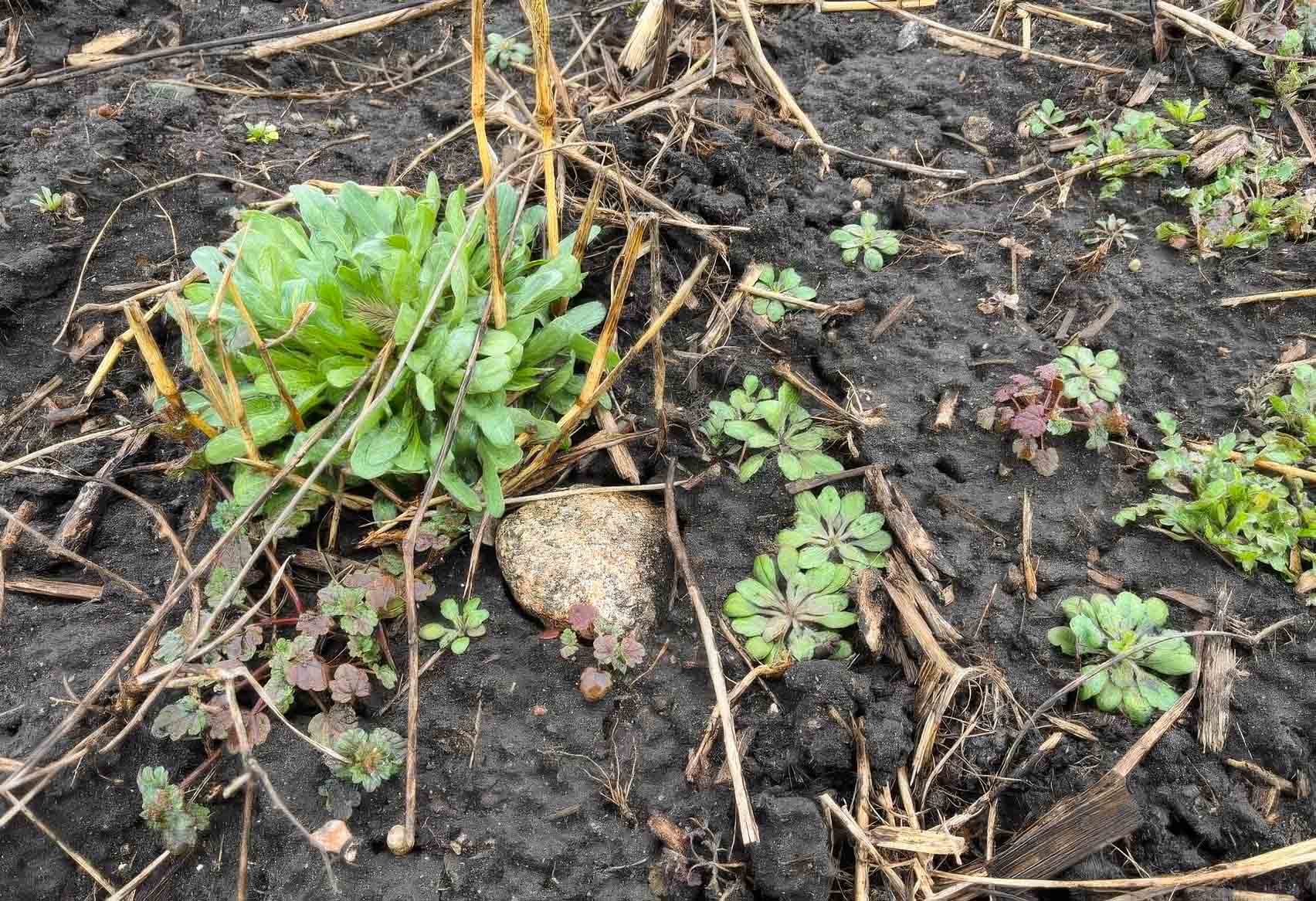
This March 8 photo shows winter annuals have resumed growth in this crop field and range in development from small rosettes to nearly flowering. (Photo: Meaghan Anderson, ISU Extension agronomist.)
Early spring weed management concerns
March 21, 2024 | Kriss Nelson
The warmer-than-usual winter and spring have given conditions suitable for many weeds to begin emerging.
Meaghan Anderson, Iowa State University Extension agronomist, says the early warmth gave winter annual weeds a spring jumpstart.
“I’ve noticed that many winter annuals are already green and growing,” says Anderson. “I have also seen some of our very early summer annual species are beginning to grow, so we will need to monitor in the coming weeks to see if species like ragweeds will be up early this year.”
There could be some concern these early emerging weeds can be challenging to control with a burndown herbicide.
Now is the time to be scouting
Anderson says farmers should begin scouting fields now that require burndown herbicides, such as no-till fields, as the application of a burndown herbicide may need to happen earlier than usual this spring.
“They should know what winter annual species they have and what size their burndown products are labeled to control to make timely decisions,” she says.
Anderson advises farmers to monitor fields with spring tillage after tillage for early-emerging spring annuals.
“If those weeds emerge before pre-plant or preemergence herbicide applications, herbicide plans may need slight adjustment to assure those species are well-controlled,” says Anderson.
Farmers should also monitor after tillage applications for early-emerging spring annuals in fields with planned spring tillage. If those annual weeds emerge before pre-plant or preemergence herbicide applications, herbicide plans may need slight adjustments to ensure those species are well-controlled.
Everything may move up in the schedule this spring, but rainfall, crop insurance dates, and other factors will determine the timing of planting and other field operations. This might allow weeds to get ahead if we aren’t prepared.
Importance of herbicide rates and timing
Herbicide rates and mixes may need to be adjusted this spring to better manage the early-emerging weeds, particularly waterhemp.
“Some herbicide premixes contain only fractions of the full rate of active ingredients, so supplementing premixes with more of individual active ingredients, as labels allow, could help improve weed control,” says Anderson.
Anderson’s weekly Central Iowa Crop Update newsletter featured her article "Weeds Took Advantage of a Mild Winter," where she discusses further in-depth selecting and applying herbicides this spring.
Anderson notes that timing for annual and biennial herbicide applications should be targeted prior to the weeds bolting or stem elongation and flowering. Control of winter and annual weeds becomes less consistent during those stages of growth.
The optimum timing of herbicide application will vary by weed species and field conditions, making site-specific scouting and knowledge of the weed infestation important for making those application decisions.
For example, she says winter annuals like henbit, common chickweed and field pennycress generally flower earlier than the winter annual horseweed and biennials like musk thistle and wild parsnip.
The timing of burndown herbicide applications may need to move earlier than in a typical year. Keep in mind that moving residual herbicide applications earlier will mean the next herbicide application will need to come earlier as well.
“Everything may move up in the schedule this spring, but rainfall, crop insurance dates and other factors will determine the timing of planting and other field operations. This might allow weeds to get ahead if we aren’t prepared,” says Anderson.
Back